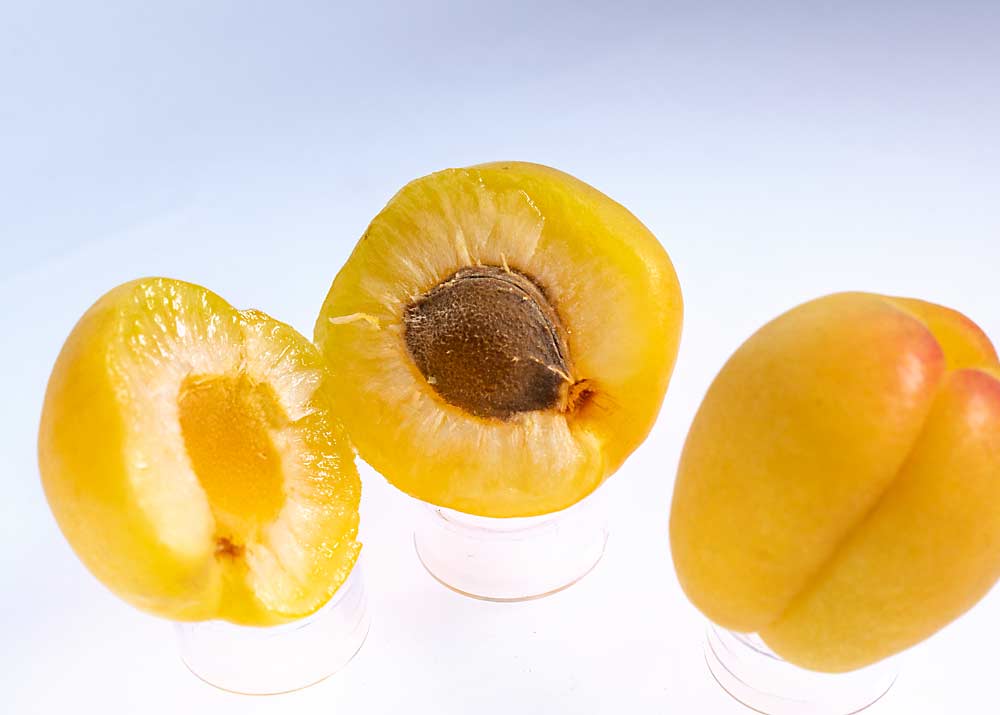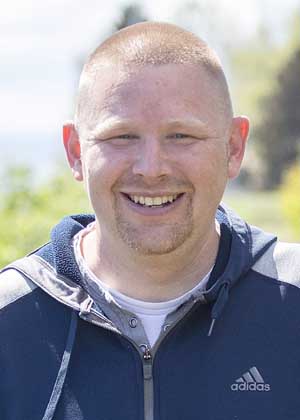
The fresh apricot market has been struggling in recent years, due to the challenges of packing and shipping the soft, fragile fruit that develops its best flavor when tree-ripened. In Washington alone, bearing acreage is down almost 20 percent since 2007.
Could the solution be new genetics?
Brandt’s Fruit Trees plans to release a new program of about a dozen apricot cultivars with great flavors and good fruit size from breeding programs in France and Canada — including orange-skinned, red-skinned and white-fleshed varieties — that it hopes will be a good fit for Northwest growers.

“We intended to come to growers with a number of high-flavored selections that all have the appearance with the high blush or white flesh, so they could put a high-value program together and harvest throughout the season,” said Kevin Brandt, vice president of the Yakima, Washington-based nursery.
In California, for the fresh market, commercial growers have shifted toward interspecific aprium varieties that can be picked firm and still have good flavor, according to Mike Tomlinson of Dave Wilson Nursery.
“Apricots are the delicacy of stone fruit,” he said. “We sell way more to the home garden market because if you want a high flavor apricot you have to grow it at home and eat it right off the tree.”
Zaiger Genetics, the stone fruit breeding program which markets through Dave Wilson Nursery, continues to release new apriums regularly, with popular recent cultivars including Coral Cot and Leah Cot. But in the Northwest, it’s new apricots that Brandt thinks will reignite consumer and grower interest in the earliest summer fruit.
“To me, with some of the apricots on the market, I can see why they are on the decline,” Brandt said. “The most exciting part of these is the flavor and appearance. Personally, I think there is a market for them. Washington can grow a really nice apricot, but we’ve got to have varieties that people really want to eat.”
Grower Sean Gilbert of Gilbert Orchards in Yakima said he’s eager for new cultivars to replace underperforming standards, such as Perfection. Gilbert Orchards grows about 80 acres of apricots and packs about 1,000 tons for themselves and other growers.
“We have one variety of apricot that hits the three main characteristics we need year in and year out: That’s size, production and consumer acceptance,” he said, referring to the midseason cultivar Robada. To try to expand the season, he’s been planting Robada at different elevations instead of a variety of cultivars.
Gilbert has test plantings of three of the new cultivars Brandt’s hopes to release — one early, one late and one white-fleshed. While the white apricot is “fabulous” and “eats phenomenally well,” he’s not sure how much room there is in the retail space for multiple types of apricots at one time.

“Apricots are a niche product anyway, so it’s hard to have a niche within a niche,” at grocery stores, Gilbert said. “But it tasted so good we had to try it.”
From a farm market perspective, however, more options are more appealing.
“When it’s something new, people have to test it,” said Mark Barrett, who grows about 70 acres of tree fruit in the Yakima area, including apricots and apriums for his farm market and wholesale distribution in the Seattle area.
The apricot timing means that demand isn’t going to go away, Barrett said, but it’s not a top priority for new planting, given recent supply and prices.
This year, however, after frost damage, supply in Washington is expected to be down.
Of the promising new cultivars, Brandt said he has harvest dates ranging from the first week in June to the third week in July.
The white-fleshed cultivars, developed by the French breeding program INRA, typically reach 20 Brix.
“My kids, they wouldn’t eat an apricot before and now they come out into the test block and love them,” Brandt said.
The terms of a commercial agreement with INRA were underway in May, and a licensing agreement is already established with the Vineland Research and Innovation Centre in Ontario, Canada, so Brandt was optimistic the new cultivars would soon be available to growers.
The Vineland apricots also offer disease-resistance that helps them perform well in Ontario and the Eastern U.S.
But whether Northwest growers will be ready to plant them remains a question — acreage has fallen to 947 acres in 2017 from 1,181 acres a decade earlier.
“There is a lot of competition for summer fruits and we are running hard to stay in place just to hold the consumer acceptance we have,” Gilbert said. “More attractive, larger, better tasting apricots, I hope can expand the market, but I don’t know.” •
—by Kate Prengaman
Related: Northern exposure






Leave A Comment